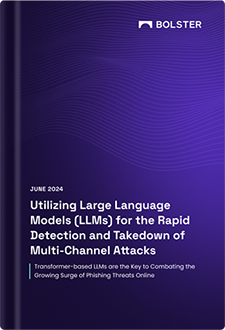Imagine it’s 2AM, and your company’s security operations center (SOC) is suddenly bombarded with hundreds of alerts: potential phishing emails, flagged URLs, suspicious logins from overseas, and an unusual spike in network activity.
Each alert demands attention, but with limited resources, deciding where to focus first becomes a high-stakes puzzle. A missed critical alert could mean a data breach that costs millions, while unnecessary deep dives into low-risk alerts waste precious time.
In this chaotic scenario, threat triage becomes a guiding force.
Defining Threat Triage
Threat triage is the process that allows security teams to identify, categorize, and prioritize potential security threats, cutting through the noise and targeting the most urgent risks first. Just as a medical team assesses patients’ severity to allocate resources effectively, cybersecurity teams rely on threat triage to address alerts based on urgency and impact.
Through this approach, organizations can ensure their resources are used wisely, minimizing potential damage and fortifying the security posture against the escalating volume and sophistication of cyber threats.
Why Threat Triage is Essential
As the above scenario highlights, with an ever-increasing volume of cyber threats, organizations face thousands of security alerts daily. Not all alerts indicate severe threats, and many may be benign or false positives. However, without an effective triage system, sifting through this flood of alerts becomes overwhelming, leading to alert fatigue, slower response times, and, in worst cases, overlooked threats.
Threat triage empowers security teams to make quick, informed decisions about which threats require immediate action, significantly reducing response times and preventing potential breaches or data losses.
Threat triage can be divided into two main approaches: Automated Threat Triage and Manual Threat Triage.
Automated Threat Triage
Automated threat triage leverages AI and machine learning algorithms to rapidly scan, analyze, and prioritize alerts with minimal human intervention. Using automation, organizations can enhance the efficiency and speed of their triage processes.
Here’s how automated triage typically works:
Data Collection: Automated triage systems continuously gather data from a wide range of sources, including emails, network traffic, endpoint devices, and web applications.
Analysis: The system applies machine learning algorithms to analyze the data for known indicators of compromise (IOCs), such as malicious URLs, attachments, and suspicious behavior patterns.
Prioritization: Alerts are then categorized and assigned a priority level based on threat severity. For example, an email with a known phishing link might be flagged as a high-priority alert, while low-risk alerts are deprioritized.
Alerting: High-priority alerts are escalated for immediate attention, while less critical issues are managed in the background.
Advantages of Automated Threat Triage
Automated triage minimizes the time security teams spend on repetitive tasks, enabling them to focus on complex threats that require human judgment and expertise. It’s all about speed, scalability, and consistency.
Speed: Automated systems process information in real-time, which significantly shortens response times.
Scalability: Automation can handle large volumes of data, making it ideal for enterprises with extensive networks and high email traffic.
Consistency: AI-driven triage provides uniform results, reducing human error in the initial threat assessment phase.
Manual Threat Triage
While automation plays an invaluable role in modern cybersecurity, some organizations continue to rely on manual threat triage, especially when dealing with unique or complex cases. Manual threat triage involves a hands-on approach, where security analysts evaluate each alert individually, often working in tandem with other departments, such as fraud prevention, legal, and customer support.
This collaborative approach can help address more nuanced threats that may not fit standard detection patterns. However, it presents several challenges, including:
Time-Consuming: Manual triage requires careful evaluation of each alert, which can slow down the response process. This is particularly problematic during large-scale attacks when rapid assessment is essential.
Resource-Intensive: Since multiple teams may need to be involved in threat analysis and validation, manual triage demands substantial resources. Cross-departmental coordination can be challenging, especially in large organizations with siloed departments.
Customer Experience Impact: Delays in responding to security incidents can directly affect customer trust. For example, a delayed response to a phishing attack can leave customers exposed to potential fraud, harming the organization’s reputation.
Advantages of Manual Threat Triage
Despite these challenges, manual triage is often necessary for sophisticated or highly targeted threats that automated systems might not detect or properly evaluate.
Human Insight: Certain threats, especially social engineering attacks, may require nuanced judgment that automation can’t replicate.
Customized Responses: For unique or high-stakes cases, manual triage enables customized responses tailored to specific situations.
Cross-Departmental Coordination: In cases where legal or compliance concerns are involved, manual triage allows teams to collaborate effectively, ensuring that responses align with organizational policies and regulatory requirements.
Achieving Balance: The Hybrid Approach
To address the limitations of both automated and manual triage, many organizations adopt a hybrid approach, combining the speed and efficiency of automation with the judgment and flexibility of human analysts.
In this model, automated systems are the first line of defense, and handle high-volume, low-risk alerts. The system filters out low-priority alerts and sends high-risk or ambiguous alerts to human analysts for further investigation.
Conclusion
Threat triage plays a critical role in a strong cybersecurity strategy. Streamlining alert management and prioritizing threats based on their severity allows organizations to optimize resources, mitigate risks, and protect sensitive data effectively.
While automated and manual triage each offer distinct benefits, combining these approaches often delivers the most effective results by harnessing their respective strengths.
Automated threat triage is a key component of Bolster’s AI Security for Email. Contact us with questions or request a demo.






